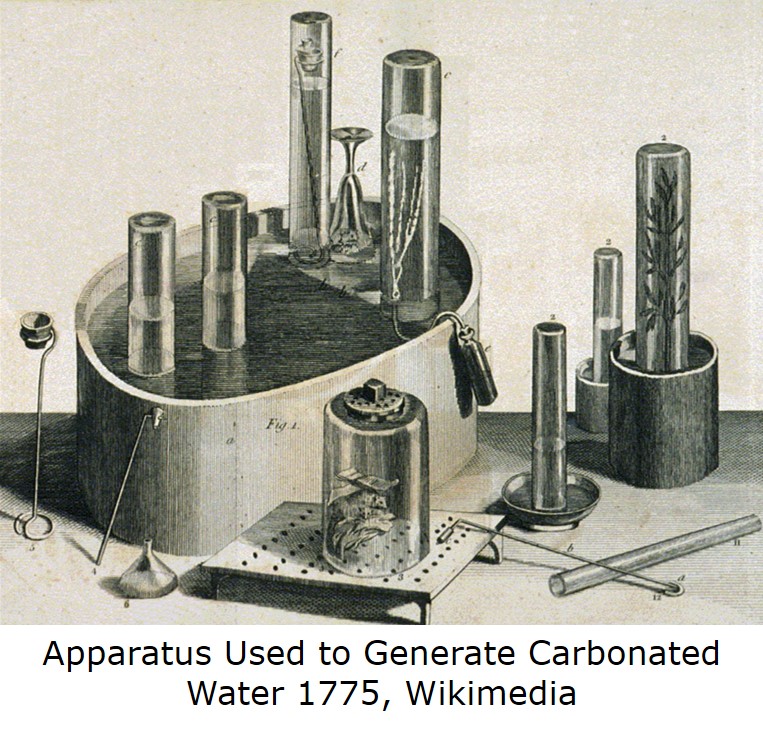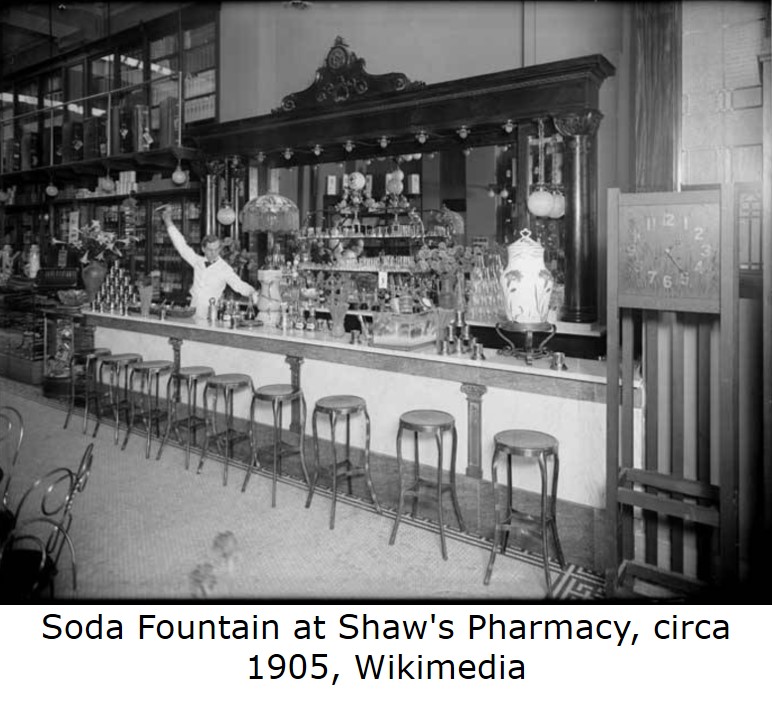By Suzanne Norquist
It’s
difficult to imagine that Coca-Cola was ever considered healthy. But John
Pemberton formulated it as a medicine and then decided to sell it as a soft
drink instead. Jacobs’ Pharmacy in Atlanta, Georgia, sold the first glasses for
five cents each in 1886.
Those who tried it considered it “delicious and refreshing,” a sentiment shared by many today. Marketing copy described it as a “valuable brain tonic” that would cure headaches, relieve exhaustion, and calm nerves. An “Intellectual Beverage.”
Carbonated water had been considered a healthy alternative to regular water for centuries. In ancient Greece, England, and other places, carbonated water bubbled up naturally from springs. Historians believe volcanic gasses created this effect.
This unique water was believed to cure diseases. In the 1700s, Germans built spas and hotels around the gaseous springs. There, tourists would drink the water and bathe in it. Entrepreneurs bottled and sold it across Europe.
In 1767, in
Leeds, England, chemist Joseph Priestley invented equipment for artificially saturating
water with carbon dioxide, and soda water was born. Soon, flavoring was
combined with the water, creating a pleasant drink.
Since healthy soda water was often mixed with medication, selling it at pharmacies made sense. Phosphoric acid mixed with lemon or orange fruit syrup created a pleasant phosphate beverage. The drinks often contained cocaine and caffeine, a combination that could treat a headache and pep someone up. Many pharmacists created their own secret formulas.
John
Pemberton, the creator of Coca-Cola, was one such pharmacist. He had earned a
medical degree and married his college sweetheart before the Civil War.
When war broke out, he joined the Confederate Army and became a lieutenant colonel. He suffered a saber wound in the chest and became addicted to morphine.
His search
for a less addictive alternative to morphine led to the creation of Coca-Cola.
His first attempt was an alcoholic beverage based on a French coca wine.
However, when Atlanta passed prohibition legislation in 1886, he changed the
formulation to remove the alcohol.
He accidentally dropped some medicine mixture into carbonated water while working at a soda fountain. It gave him the idea to sell it as
a soft drink rather than a medicine.
With
temperance movements around the nation, soda fountains grew in popularity. They
provided an alternative to bars as gathering places. Beverages served there
also became popular.
Coca-Cola syrup’s base ingredients were coca leaves (cocaine) and kola nuts (caffeine). Both were common and completely legal at the time. Kola was sometimes spelled with a ‘C.’ The combination of the two words gave the drink its name.
After 1904, Coca-Cola removed most of the cocaine from its process. After this time, the drug was extracted from the leaves before adding them to the syrup. Thus, the taste remained without the addictive element.
In 1911,
there was a push to remove caffeine because of its habit-forming nature.
Eventually, the amount of the stimulant was reduced, but it wasn’t removed
altogether.
Dr. Pemberton
and his heirs didn’t realize much profit from the business. He sold off various
interests in the company to feed his continued morphine addiction. Apparently,
Coca-Cola didn’t solve that problem.
All of this seems like a roundabout way to come up with the refreshing beverage we enjoy today.
***
Four
historical romances celebrating the arts of sewing and quilting.
Mending
Sarah’s Heart by Suzanne Norquist
Rockledge,
Colorado, 1884
Sarah
seeks a quiet life as a seamstress. She doesn’t need anyone, especially her
dead husband’s partner. If only the Emporium of Fashion would stop stealing her
customers, and the local hoodlums would leave her sons alone. When she rejects
her husband’s share of the mine, his partner Jack seeks to serve her through
other means. But will his efforts only push her further away?
Suzanne Norquist is the author of two novellas, “A Song for Rose” in A Bouquet of Brides Collection and “Mending Sarah’s Heart” in the Thimbles and Threads Collection. Everything fascinates her. She has worked as a chemist, professor, financial analyst, and even earned a doctorate in economics. Research feeds her curiosity, and she shares the adventure with her readers. She lives in New Mexico with her mining engineer husband and has two grown children. When not writing, she explores the mountains, hikes, and attends kickboxing class.











Thank you for posting today and giving me further insight into the creation of Coca Cola. I did know it was medicine first.
ReplyDelete